We've gone through the tips and photos from millions of travelers on the world to find out exactly what makes these places such an one-of-a-kind destination.
1. Town Of Spiders Rain
The latest arachnid shower took place last week in a town called Goulburn, in New South Wales, approximately 195 km south-west of Sydney, where millions of tiny spiders rained down from the sky and blanketed the countryside with their webs.
Unlike the rare frog rains and fish rains, that’s not entirely understood, arachnid showers is a well documented phenomenon called “ballooning” which is used by spiders and some other invertebrates to migrate from one pace to another.
During a “ballooning” event, the spiders will climb up as high as they can, stand on raised legs with its abdomen pointed upwards and release several silk threads into the air. These strands form triangular shaped parachutes that allow them to be carried away by the wind hundreds of miles to a new territory. In windless conditions, the Earth's static electric field may also provide lift.
The astonishing spectacle usually occurs in May or August in
Australia, right after rainfall. It is rare because it requires an unusual weather pattern for this time of year, which is when spiders are hatching.
2. Ducks Get Their Own Lane
England and Wales has more than 2,000 miles inland waterways, along which run narrow towpaths that are barely wide enough for cyclists and pedestrians. And then, there are ducks. The charity organization Canal & River Trust who is responsible for maintaining these waterways have installed temporary "Duck Lanes" along the waterways in London, Birmingham and Manchester. The move is part of the "Share the space, drop your pace" campaign that encourages cyclists and pedestrians to be more considerate of surrounding wildlife.
This is true not only for Britain’s towpaths, but all pavements in general. It's everyone's responsibility to stay alert and watch out for walkers or bikes coming in the opposite direction. Last year, the Chinese city of Chongqing opened a “cellphone lane” for people who are too engrossed on their smartphones to see where they are going and frequently bump into other pedestrians.
3. Tree Climbing Goats Country
In southwest Morocco, you might actually be forgiven for asking daft questions like “do goats grow on trees?”. Goats are skilled climbers and are known to scale steep rock faces and mountains in search of food. The ones in Morocco climb trees for the same reason – food, which is otherwise scarce in this drought-ridden region.
The goats are drawn to the fruit of the Argan tree, which ripens in June each year. The Argan grows to 8-10 meters high and live up to 150–200 years. They are thorny, with gnarled trunks, but the goats, who have been climbing these trees for centuries, have learnt to adapt themselves to the task.
4. The Trailing of the Sheep Festival
Every year at the end of summer, livestock herders in the state of Idaho, in the US, guide thousands of sheep through hundreds of kilometers in a route stretching from the Sawtooth Mountains in the north to the winter pastures of the Snake River Valley in the south.
The Trailing of the Sheep, as the event is called, marks the end of the four-day
festival organized in the town of Ketchum, that celebrates the rich and colorful history and culture of sheepherding in the western United States. The sheep are accompanied by historic sheep wagons and dancers and participants from the Folklife Fair.
Aside from the sheep parade, the festival holds events such as Sheep Dog Championship, a Folklife Fair, lamb cooking classes, lamb tastings, sheep photography classes, lectures about sheep, and traditional dancing and merry making.
5. The Snow Monkeys of Jigokudani
Jigokudani is located in the valley of the Yokoyu River, in Nagano Prefecture, in Japan, at an elevation of 850 meters. Literally “hell’s valley”, the area took its name from the steam and boiling water that bubble out of small crevices from geothermal hot springs in the ground below.
The ground remains frozen in winter and heavy snowfalls cover the area for at least four months each year. In this hostile environment, lives a small population of Japanese Macaques, also known as Snow Monkeys, who manage to keep themselves warm by bathing in the natural hot water pools.
These monkeys blissfully soaking in the hot pool with their fluffy, snow-powdered heads sticking out of the water is fascinating to watch. Despite being relatively well-known, however, few people are willing to undertake the two-kilometre trek through the frozen forest in the peak of winter to observe the monkeys. Jigokudani Monkey Park, hence, remains largely uncrowded.
The wild Japanese Macaques forage around Joshinetsu Kogen National Park, where the park is located, during the warmer months, coming down to the valley only during the winter. This is the time when the park is best to visit – when the valley is covered in a blanket of white snow, and the monkeys are playing around the hot spring bath.
6. The Penguin on Falklands’ Minefields
The Falkland Islands are an archipelago in the South Atlantic Ocean about 300 miles east of South America's southern Patagonian coast. The 18th century was a popular time for whaling. The whale oil industry was booming, and the Falklands was an ideal place for catching whales and extracting whale oil. Without wood to keep the fire going, the whalers started using another plentiful resource that made a suitable fuel - penguins.
By the time the whale oil business died out, millions of penguins have been burned. 300 years ago, before the Europeans arrived, the islands were teeming with an army of penguins 10 million strong. This figure was reduced by 95%. Then the Argentinean invasion happened.
The Argentines wanted their islands back, and to deter the British from reclaiming the area they captured, its military laid down more than 20,000 landmines along the beaches and pastureland near the capital city. After the war ended, the British government made an effort to clear the minefields but it was a dangerous and laborious effort. Instead, they decided to fence off the explosive zones and put up signs warning people to stay away from the area. With humans out of the way away, these minefields have since become accidental sanctuaries for the islands’ penguins.
7. Friendly Crocodiles of Paga
Crocodiles are generally aggressive, but not in the town of Paga. This small town in northern Ghana, nestled right up against the border of Burkina Faso, is home to some of the most docile members of this fearful predator species.
They live in the Paga Crocodile Pond, about forty-four kilometers from Bolgatanga, the regional capital, where they swim merrily along side young children while their mothers wash clothes on the banks. No one has ever been harmed by any of the crocodiles.
The crocodiles are equally respected by the villagers who believe that the soul of every native of the village is carried by these
animals. They claim that whenever any important personality in the village dies, it is followed by the death of one of the sacred crocodiles.
8. Blooming of the Tisza
Every year from late spring to early summer, an incredible natural spectacle transforms Hungary's Tisza River. Millions of long-tailed mayflies, or Palingenia longicauda, rise in huge clouds from the river, flutter on the surface of the water, mate and perish, all in just a few hours. The unique event which lasts for three to four days, is frequently referred to as “blooming of the Tisza”, and is amongst the most fascinating natural phenomena in European rivers.
The synchronized hatching of the Palingenia longicauda is one of nature's great sights, as the surprisingly large insects seem to dance above the river's surface, smothering the riverbank and any other available surface including cars, roads and people as they seek to find a mate in the short time available to them.
9. Monarch Butterfly Migration
The Monarch butterfly is famous for its southward migration from Canada to Mexico and the northward return back to Canada in summer. Every fall, millions of these butterflies fly west to their wintering grounds in California and Mexico, covering the trees there with their bright shimmering wings.
These butterflies congregate into colonies, clustering onto the pine and oyamel trees. In many cases, they are so thick that the trees turn orange in color and branches sag from the weight. It’s a remarkable sight that attracts scores of tourists.
The Monarch migration usually starts around October each year, but can start earlier if the weather turns cold sooner.
The area is now a World Heritage Site known as the Monarch Butterfly Biosphere Reserve. There are dozen such sites in Mexico and they are protected as ecological preserves by the Mexican government.
10. The Adams River Salmon Run
The Adams River is a tributary of the Fraser River in British Columbia, Canada. During mid-October millions of sockeye salmon run through this river and concentrate near the river mouth for breeding, an event that occurs once every four years.
As many as 10 to 15 million salmons battle the Fraser River and the Thompson River to reach the 12 kilometer Adams River - the final stop to their 4,000 kilometer journey - where they spawn and die. While the sockeye return every year, the migration that occurs every fourth year (2010, 2014, 2018...) dwarfs the others.
The Adams River salmon run is patiently waited upon by grizzly bears, black bears, fishermen as well as tourist.
The best place to view the run is at the Roderick Haig-Brown Provincial Park. This is located between Adams Lake and the Shuswap Lake, about a 40 minute drive from Kamloops. The crimson salmon are easily seen in the river at the Roderick Haig-Brown Provincial Park where viewing platforms and walking paths have been established for many visitors to enjoy this natural attraction.
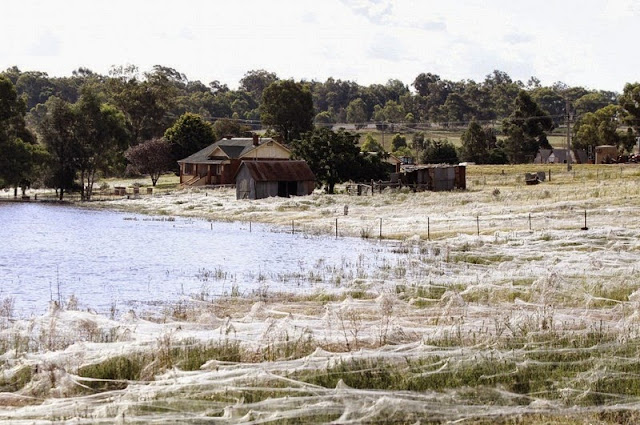

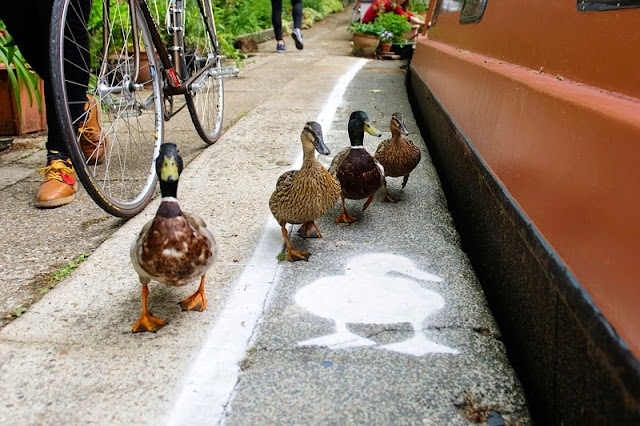


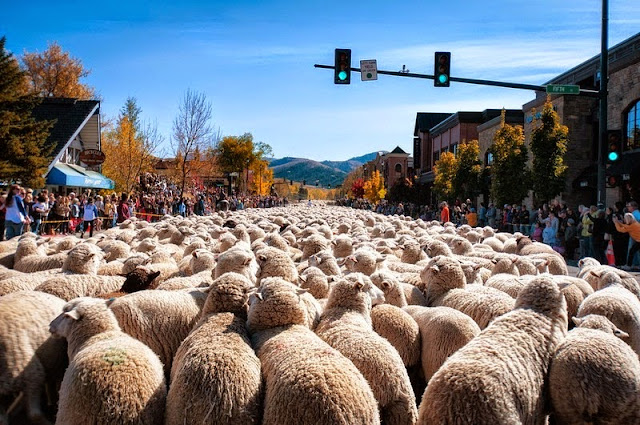



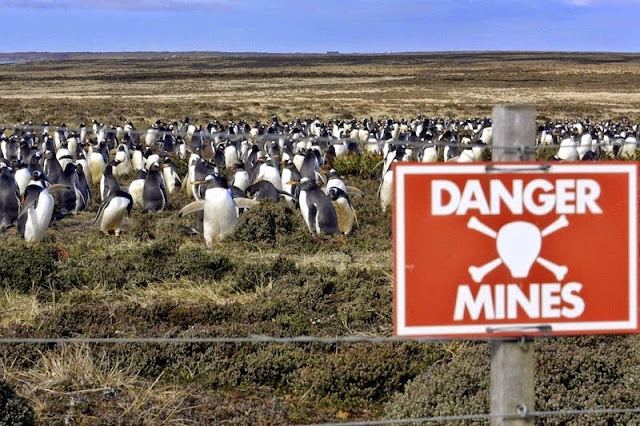





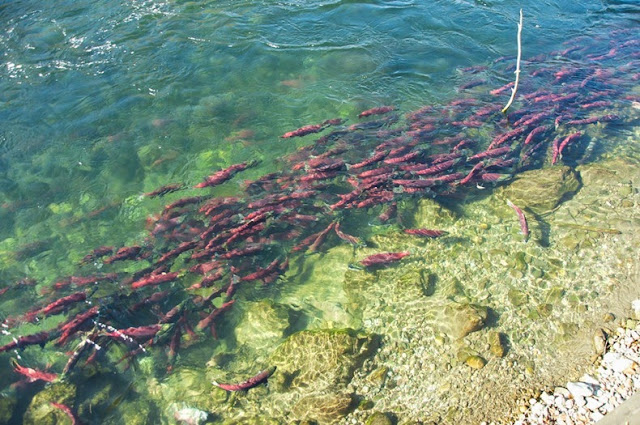

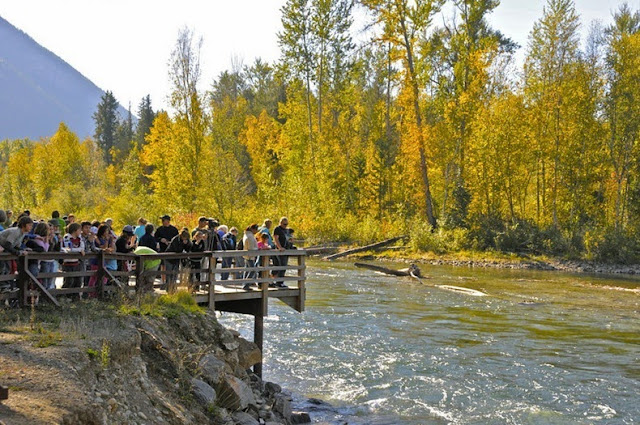

 Top 10 Most Beautiful Islands In Asia
Top 10 Most Beautiful Islands In Asia
 Top 10 Deadliest rocks and minerals on earth
Top 10 Deadliest rocks and minerals on earth


 Top 10 Weirdest Lizards - Reptiles On The Planet
Top 10 Weirdest Lizards - Reptiles On The Planet
 Gallery: The Best Beautiful Photos Of Old Sai Gon, Vietnam
Gallery: The Best Beautiful Photos Of Old Sai Gon, Vietnam
 Top 10 Species Of Exotic Mushrooms In The World
Top 10 Species Of Exotic Mushrooms In The World
 Top 10 Most Amazing Sea Monsters on the Earth
Top 10 Most Amazing Sea Monsters on the Earth
 Top 10 Weirdest Jobs In The World
Top 10 Weirdest Jobs In The World

0 Comment | Write Something